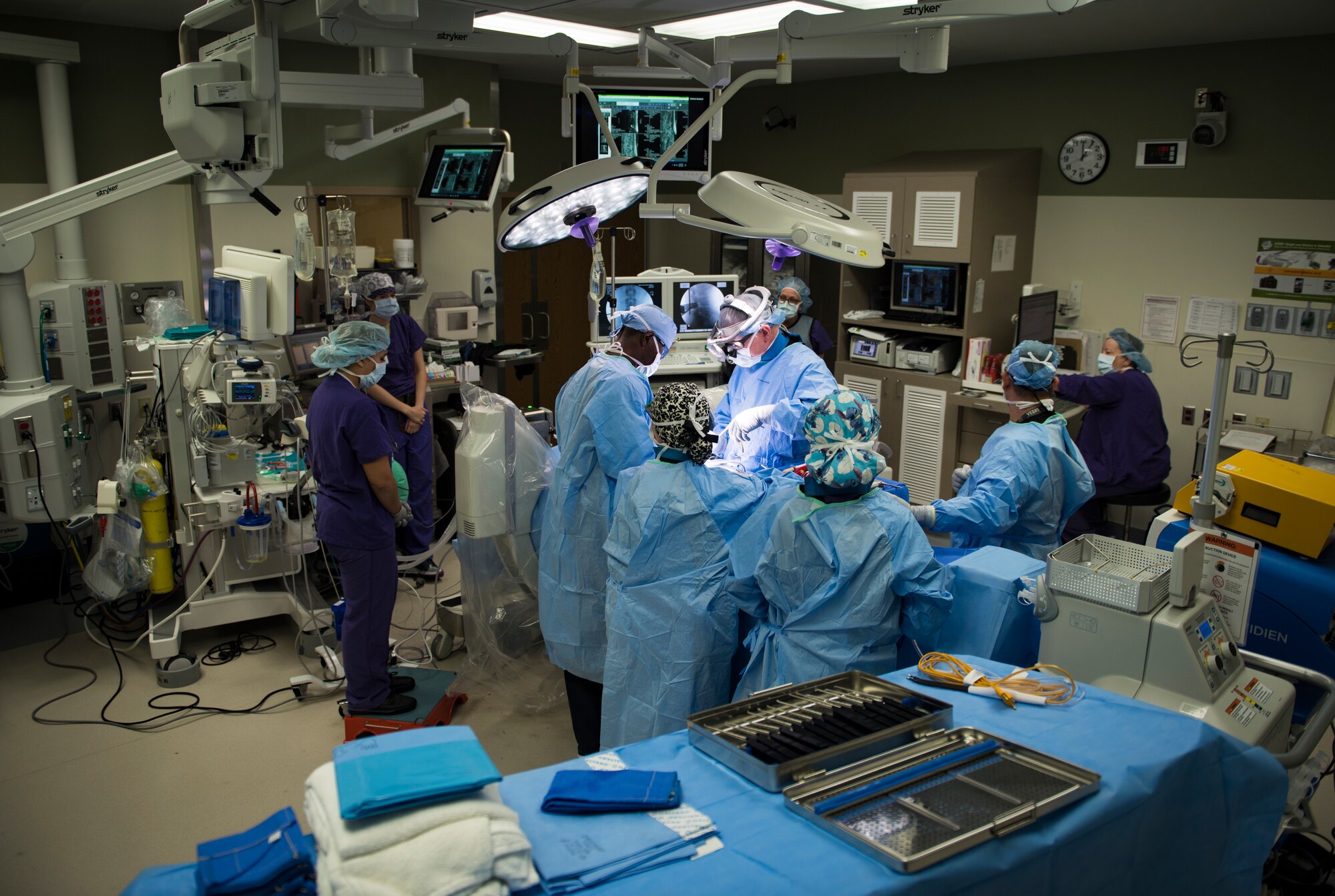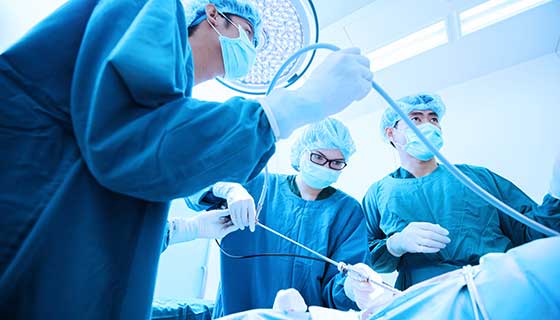Comprehending the Typical Spine Troubles That May Require Surgical Intervention
An extensive understanding of typical spine troubles that may require medical treatment is necessary for both doctor and people. Problems such as herniated discs, spine stenosis, and degenerative disc disease not only influence wheelchair however can likewise considerably impair lifestyle. While conventional treatments often offer alleviation, there are circumstances where surgical procedure becomes one of the most sensible alternative for bring back feature. As we discover the various problems and their implications, it becomes obvious that the decision-making process bordering surgical treatment is complicated and diverse, increasing vital concerns about timing, risks, and end results.
Herniated Discs
Herniated discs are a widespread back condition, usually arising from age-related deterioration or severe injury. best spine surgeons in st louis mo. This condition occurs when the soft inner product of a back disc sticks out via its outer layer, potentially pressing adjacent nerves. The resulting signs and symptoms can consist of local pain, numbness, tingling, or weakness in the limbs, depending on the damaged location of the spine
Diagnosis commonly entails a detailed clinical history and checkup, often supplemented by imaging research studies such as MRI or CT checks. These diagnostic tools permit healthcare professionals to analyze the degree of the herniation and its influence on bordering structures.
Therapy choices for herniated discs range from conservative measures, such as physical therapy and drug, to more invasive procedures. Lots of clients discover alleviation through non-surgical methods, which focus on discomfort monitoring and restoring feature. However, when conventional therapies fail to ease symptoms or when neurological shortages develop, medical treatment may be called for.
Surgical choices, consisting of discectomy or back combination, aim to ease stress on the damaged nerves and restore back stability. The choice to pursue surgical treatment is usually made after cautious consideration of the individual's overall health and wellness, intensity of symptoms, and reaction to previous treatments.
Spine Constriction

Signs commonly get worse with activities that require long term standing or walking, bring about a problem understood as neurogenic claudication. Diagnosis normally includes imaging researches, such as MRI or CT scans, which aid picture the degree of constriction and determine affected locations.
Treatment options for spine constriction may begin conservatively, using physical treatment, discomfort administration strategies, and way of living alterations. Surgical interventions, such as decompression laminectomy or back fusion, goal to alleviate pressure on the back cord and nerves, consequently reducing discomfort and restoring feature.
Scoliosis
A significant number of individuals are impacted by scoliosis, a problem identified by an uncommon lateral curvature of the back (best spine surgeons in st louis mo). This curvature can establish in different forms, including idiopathic scoliosis, which occurs without a well-known reason, or as an outcome of neuromuscular problems, hereditary aspects, or degenerative conditions. The extent of scoliosis can vary dramatically, ranging from moderate contours that may not look at this web-site call for therapy to serious cases that can lead to discomfort, respiratory problems, and reduced lifestyle
Non-surgical interventions consist of observation, supporting, and physical treatment. Medical intervention might end up being needed for individuals with substantial curvature that is getting worse, or for those experiencing devastating signs and symptoms. Surgical choices commonly involve back combination, which aims to correct the curvature and maintain the spinal column.

Degenerative Disc Illness

DDD is typically an outcome of the all-natural aging process, however aspects such as genes, way of living, and recurring stress can increase its onset. Patients frequently report localized discomfort in the reduced back or neck, which might emit to other areas, such as the arm or legs. In severe instances, nerve compression can cause neurological signs, including feeling numb, tingling, or weak point.
While conventional treatments, such as physical therapy and discomfort monitoring, can relieve signs and symptoms for several individuals, some might call for medical intervention. Surgical alternatives, such as spine fusion or artificial disc replacement, purpose to recover stability and reduce pain by dealing with the underlying problems brought on by DDD. A comprehensive analysis by a back expert is vital to figure out one of the most ideal therapy approach.
Fractured Vertebrae
Broken company website vertebrae represent a substantial issue in spine health, frequently resulting from injury, weakening of bones, or other degenerative problems (best spine surgeons in st louis mo). These cracks can cause serious pain, loss of mobility, and potential difficulties such as spine instability or neurological deficits. The mechanism of injury usually involves either direct injury, such as falls or car mishaps, or the steady weakening of bones due to problems like osteoporosis
Diagnosis is usually validated through imaging research studies, consisting of X-rays, CT scans, or MRIs, which reveal the level and type of fracture. Therapy choices vary depending upon the crack's intensity and the patient's general health and wellness. Conservative monitoring may involve discomfort relief, remainder, and physical therapy; however, surgical treatment might be needed for displaced cracks, those triggering spine instability, or when conservative actions fall short.
Surgical methods can consist of vertebroplasty or kyphoplasty, procedures aimed at stabilizing the vertebra and relieving discomfort. In more extreme instances, spine fusion might be suggested to bring back architectural integrity. Prompt and proper treatment is essential in ensuring ideal recovery and minimizing long-term difficulties related to fractured vertebrae.

Conclusion
In summary, typical spinal column troubles such as herniated discs, spine stenosis, scoliosis, degenerative disc illness, and broken vertebrae can dramatically impair lifestyle and require medical intervention. While conservative therapies might provide relief oftentimes, consistent or extreme signs usually warrant medical options to recover function and relieve pain. Timely medical diagnosis and ideal administration are vital to enhance patient outcomes and promote healing in people influenced by these debilitating problems.
Back stenosis is a condition characterized by the constricting of the spine canal, which can lead to compression of the back cord and nerve origins. Surgical interventions, such as decompression laminectomy or spinal blend, purpose to eliminate pressure on the spinal cable and nerves, thereby alleviating discomfort and restoring function. Surgical alternatives, such as spine blend go or fabricated disc replacement, purpose to bring back stability and relieve pain by addressing the underlying concerns triggered by DDD. Traditional management might include discomfort relief, remainder, and physical therapy; however, medical intervention might be required for displaced fractures, those creating back instability, or when conservative procedures fall short.
In summary, typical back problems such as herniated discs, spine constriction, scoliosis, degenerative disc illness, and broken vertebrae can substantially harm high quality of life and demand medical treatment.